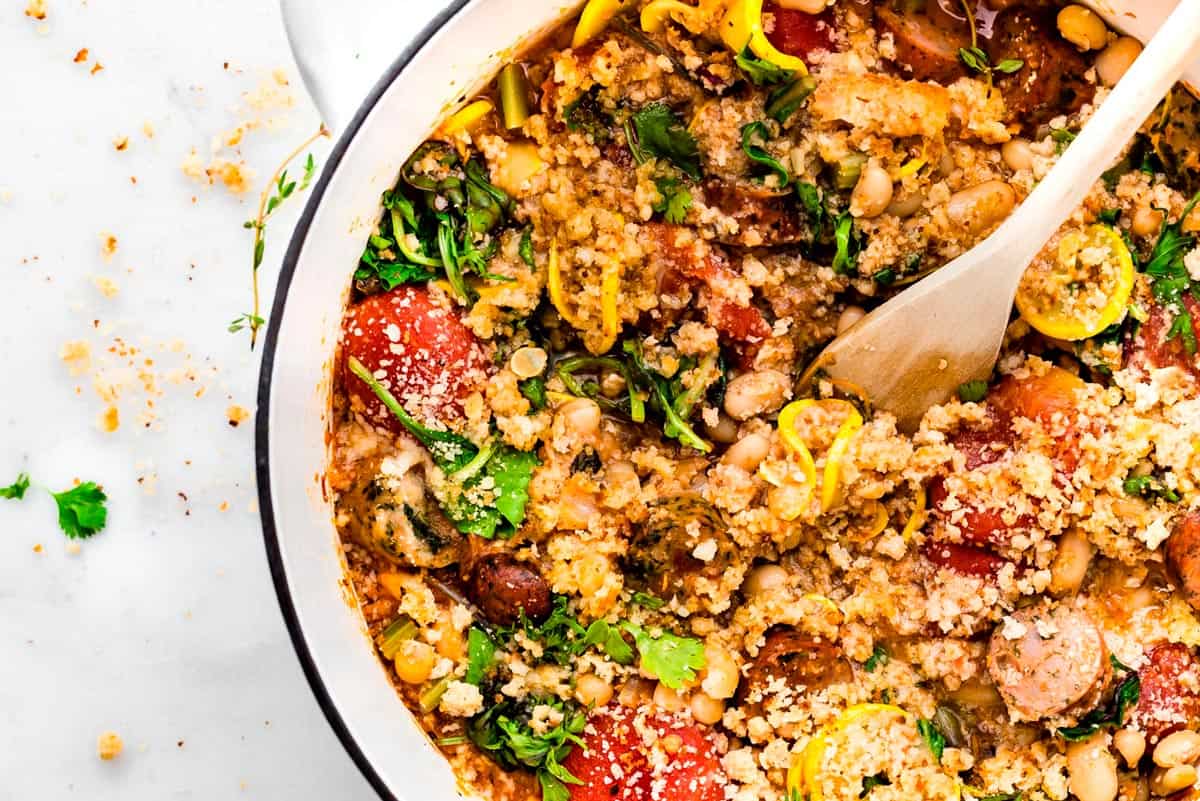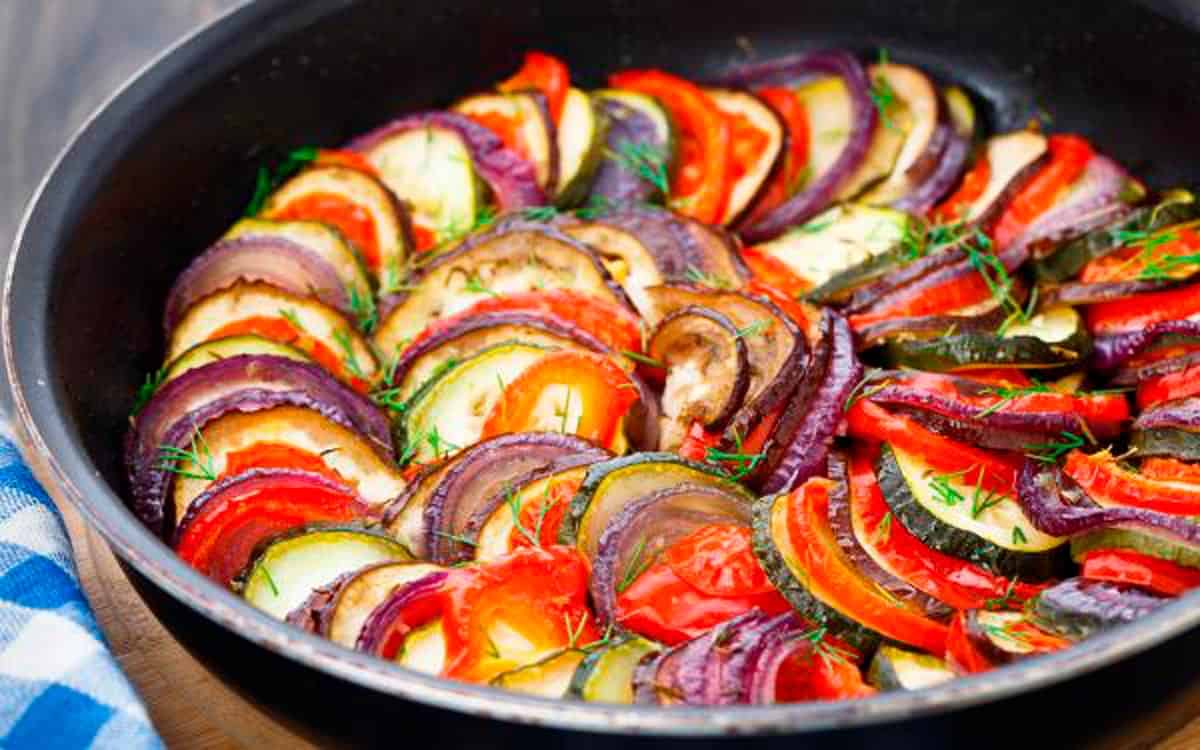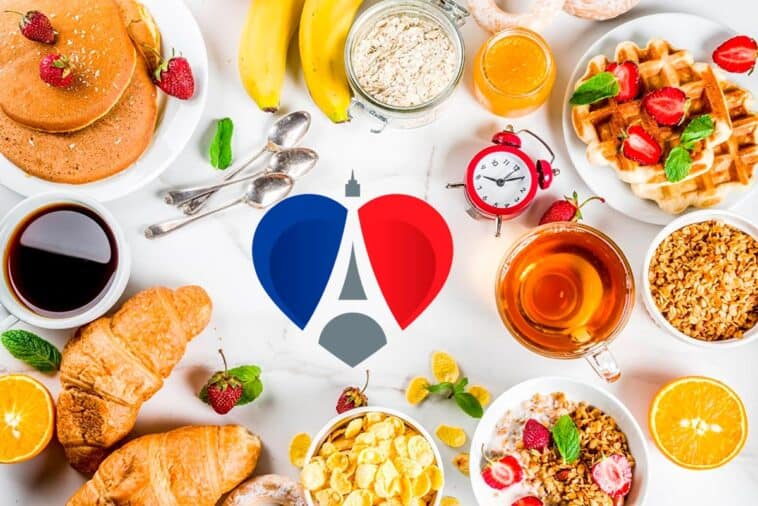A country’s cuisine carries unique cultures and customs that define its people. In France, it is no different, whose cuisine takes advantage of the diversity of wines, cheeses, meats, and sweet recipes.
In addition to being rich in details, tasty, and very refined, French cuisine is considered worldwide as synonymous with excellence, quality, and elegance. French chefs are seen as a reference for those who are or wish to enter the gastronomy branch.
The History Of French Cuisine
It all started in the Medieval Period, when it was not common to have many meals throughout the day. So, each meal served was considered a feast, full of different and exquisite dishes, especially when it came to the nobility, as the servants usually ate the leftovers of the “recipes” ingredients.
It was not common to serve meals on plates with individual cutlery at that time. Each person ate with their own hands, taking portions from the trays like snacks. In the reign of Louis XIV, meal times were opulent, full of theatrical performance and lots of partying.
In the 18th century, meals began to be regulated and served in parts, starting with drinks and appetizers, such as snacks and appetizers to whet your appetite. More sophisticated dishes such as roasts were performed, and then sweet dishes to finish the snack.
Catherine de Medici
Catherine de Medici (1519-1589) was an Italian noblewoman who married King Henry II (1519-1559). Because of her, French cuisine began to improve, receiving significant influence from Italian cuisine. Furthermore, because of this influence, the French started to use plates and cutlery in their meals.
And that’s how the étiquette à table was established, which is a term used to designate the rules of etiquette.
Gourmet
But it was only with the French Revolution that the idea of a restaurant emerged, that is, table service. At that time, the first restaurant in Paris opened the Boulanger in 1765. And from it, many other restaurants quickly opened.
Still, in the 17th century, chef François Pierre de la Varenne published two books entitled” “The perfect cook” and “The French cook,” where he divulges unprecedented techniques intending to create smaller and more delicate dishes. In this way, it was possible to increase the rotation of the dishes served.
Le Cordon Bleu
Sometime later, in 1895, the gastronomy school Le Cordon Bleu was founded in Paris by Marthe Distel and is today considered an international teaching network for the management of hotels and schools in Paris. French cuisine.
In addition to being a journalist, Marthe Distel was also editor of La Cuisinière Cordon Bleu magazine. Through Cordon Bleu, many students became renowned and internationally recognized chefs, which helped spread French cuisine’s fame. In the 20th century, big names stood out, such as Paul Bocuse.
Currently, more than 35 international Le Cordon Bleu schools are spread across 20 countries. In addition, there are already more than 20 thousand students per year. Most of the professor chefs have served in Michelin-starred restaurants.
The French Cuisine Divisions
Cuisine Bourgeoise
The bourgeois cuisine includes dishes considered French classics but not regional. They have been adapted to serve the wealthier classes. The dishes prepared in this type of cuisine are considered typical dishes of French cuisine, made with complex techniques and with many kinds of sauce.
However, despite the myth that the French eat these super exquisite dishes daily, they are reserved for festive and special occasions. Daily meals are light and straightforward.
Cuisine du Terroir
These are less elaborate dishes than the recipes of the cuisine bourgeoise, as they are dishes based on fresh, local ingredients. The Cuisine du Terroir category is preparing regional dishes, concerned with product quality and peasant tradition. Generally, these recipes are not known worldwide.
Nouvelle Cuisine
Nouvelle cuisine was created to make lighter sauces and use fresh and simple ingredients. In addition, it was adapted for smaller portions, being presented in beautiful, creative, and delicate dishes. It was developed in the mid-’70s by renowned chefs like Jacques Pic and Paul Bocuse.
Cuisine The Actuelle
Currently, French cuisine uses three types of cuisine: the cuisine bourgeoise, the cuisine du terroir, and the nouvelle cuisine. It can be said that the cuisine du terroir, or regional cuisine, is the most used, as much importance is given to local products, which are easier to be found.
Still, many chefs are influenced by cuisines worldwide and combine French cuisine with techniques or ingredients from other cultures. This is the case of chef Adeline Grattard, who brings together French and Chinese cuisine.
Regional Cuisine In France
As in many countries worldwide, France also has gastronomic specialties in each region.
Southeast
The Southeast region is adopted the Typical cooking is known, which contains plates is m quite olive oil, tomatoes, and vegetables. In addition, the sea bass, which is abundant in the Mediterranean, is also widely used.
The specialty in the Languedoc region is cassoulet, a kind of French feijoada Brasil’ss typical dish). Tomatoes are very popular in French Catalonia.
South-West
The Southwest region is marked by mushrooms, gizzards, liver, and duck fat, that is, many recipes made from birds. A famous dish is foie gras, a special preparation made with duck or goose liver. In addition, the black truffles from the region are very popular.
Another striking feature of Southwestern cuisine is the use of seafood, favored by the proximity of the Atlantic Ocean, such as oysters and trout and salmon in nearby rivers.
North East
The cuisine of the Northeast makes a lot of use of sausages in roasted dishes, lard, and sauerkraut. Other tasty dishes from the region include endive with bechamel sauce and sugar beetroot from the Picardy region.
Fish are also widely consumed in the Boulogne- sur- Mer region. The Northeast region is also familiar to flammkuchen, mainly known for pie flambée, a specialty of Alsace.
West/Northwest
In the east of the country, the cuisine uses fish and seafood, such as oysters of the basin Marennes-Oléron, since it is a region near the ocean. The region d and Charentes produce many cheese types due to large livestock.
In addition, the region is in fruits such as apples, dairy products, butter, and some dishes such as crème fraîche and crepes.
Other Regions
There are also other types of cuisine typical of specific areas, such as the cuisine of the River Loire Valley, with dishes made with freshwater fish and white wines. Another example is Basque cuisine, where peppers and tomatoes are often used.
Classic French Cuisine Recipes
Soup D’ Oignon
Gratin onion soup is traditional in French cuisine. Its preparation is relatively simple and consists of browning thin slices of onion in butter until reduced, then adding beef stock, brandy, and a little wheat flour to make it creamy.
The differential soup adds cheese Grutère grated when it’s ready and put gratin. Serve with slices of toasted bread. This dish was once considered a recipe for underprivileged classes, but it is a guaranteed success in good restaurants today.
Cassoulet

Cassoulet is a type of French feijoada originating in the Languedoc-Roussillon region. Its main ingredients are meat cooked from goose or duck, sausages, sausages, lamb or pork, and dried beans.
Its preparation resembles the traditional Brazilian feijoada. The dish’s name comes from the fact that the beans are cooked with vegetables in a clay casserole ( casserole ).
Escargot

Escargot is a terrestrial snail cooked in a sauce of garlic, butter, and parsley. It is considered a noble dish in French cuisine. To prepare it, you must clean it well before cooking. To do this, take it out of the shell and replace it after cooking.
Crème Brulee

This is a very famous recipe and became popularly known after appearing in the movie The Fabulous Fate by Amélie Poulain. It is made with cream, sugar, vanilla, and eggs. But the protagonist is the burnt sugar crust, which needs to be broken up with a spoon.
This delicious dessert is served in individual ramekins and should be eaten chilled.
Macaron
Macarons are meringue cookies crunchy on the outside and soft on the inside. Despite being a typical French sweet, its origin is Italian and was only brought to France through Queen Catherine de Médici, later becoming popular as a French sweet.
They are very popular not only for their pleasant and sweet flavor but also for their colorful appearance, allowing chefs to abuse creativity, and Deix will make them even more original with different flavors.
Croque Monsieur
Croque-monsieur, or “mister crunch,” can be considered one of the most straightforward French recipes to prepare. It’s a hot mix very well made with quality ingredients. It’s a hit in cafes around the world.
Its preparation consists of browning slices of bread stuffed with cheese and ham, covered with bechamel sauce. To make it more sophisticated, make a good choice of cheeses and change the traditional ham for parma ham, for example.
Crepe
Crepe is a simple dish often consumed in snacks and breakfasts. It’s a thin-crust pancake with easy-to-find ingredients like wheat flour, milk, and eggs.
A typical recipe from the Northwest region of France, it is traditionally filled with sweet ingredients. The salty version is called the galette.
Clafoutis
The clafoutis is a delicious cherry pie whose ingredients are milk, sugar and flour, and eggs, forming a cream cooked in the oven. It is stuffed with whole cherries.
Steak Tartare
The steak tartare is an exotic dish French which is served raw, so it usually does not please any palate. Its preparation takes raw meat, whose seasonings are onion, capers, mustard, and ketchup. It is served with a raw egg yolk on top, giving it a special touch.
Ratatouille

A typical recipe of Provençal cuisine, ratatouille is a colorful, delicious dish and a true classic of French cuisine. It is a functional food and can be served both as a main dish and as an accompaniment and hot or cold. It’s up to personal taste.
It’s made of eggplant and tomatoes, in addition to other vegetables. Vegetables are seasoned and can be drizzled with tomato sauce.
Madeleines
Originating in the region of Lorraine, in northeastern France, the delicious madeleines are little cakes made in the shape of shells and baked until golden.
The traditional recipe uses wheat flour, eggs, sugar, butter, yeast, and lemon zest. But it is possible to adapt using chocolate or berries.
Eclair
Also known as a chocolate bomb, it’s a typical confectionery recipe that you eat with your eyes! It has an elongated and thin shape and is made with a dough called choux, prepared with base ingredients such as wheat flour, water, butter, and eggs.
The fillings are variable, but the icing is usually made from hardened chocolate.
Foie Gras

This recipe generates a lot of discussions, which makes it even more popular. This is goose or duck liver in lipid hypertrophy. In other words, it’s done with the overfed animal’s liver. Thus, the meat gets bigger and more succulent too.
Although it doesn’t look like it, foie gras is considered a luxury dish, served mainly on special occasions such as holiday parties and birthdays.
French Cuisine: A Unique Gastronomy

The French are fascinated by cooking and are committed to its recipes, from the simplest to the most elaborate. Their dishes are prepared with attention to detail, making French cuisine even more exciting and appreciated worldwide.
See also: All About Brie Cheese (In Portuguese)




GIPHY App Key not set. Please check settings